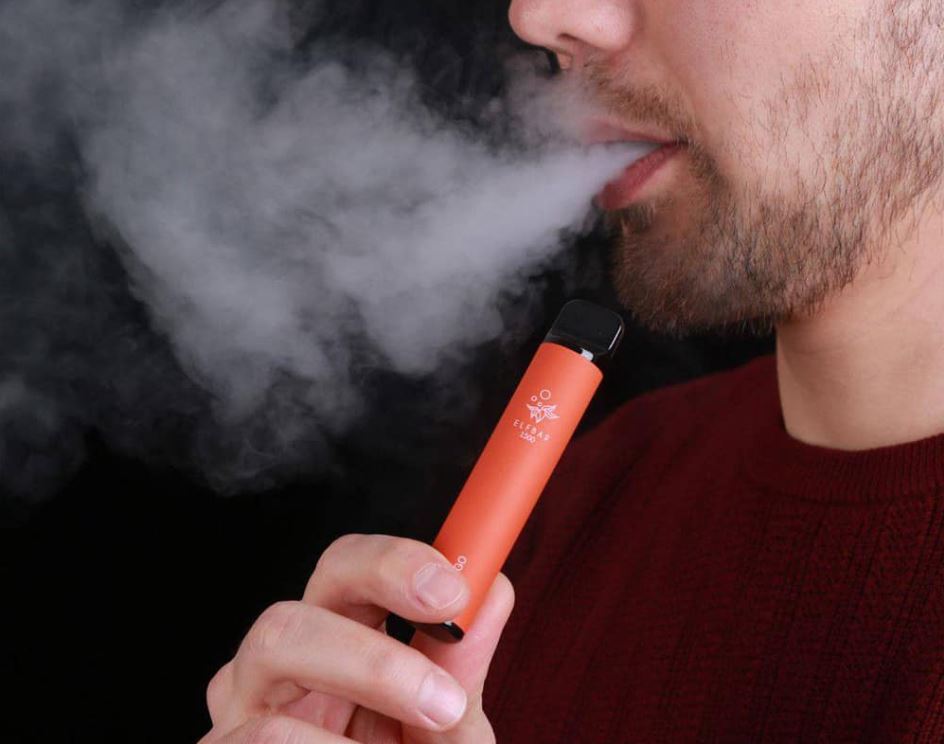Understanding Elf Bars and Disposable Vapes
Disposable vapes, such as Elf Bars, are electronic cigarettes designed for single use. Once the device is empty, the user simply discards it and replaces it with a new one. The convenience and simplicity of disposable vapes have contributed to their widespread adoption among adult smokers seeking a less harmful alternative to traditional cigarettes.
Comparing the Health Risks: Elf Bars vs. Cigarettes
When assessing the health risks associated with Elf Bars and other disposable vapes, it’s crucial to consider the context of their use. The vast majority of vapers are either current or former smokers, making it essential to compare the risks of vaping to those of smoking.
According to Public Health England, a respected British agency, vaping is at least 95% safer than smoking. This landmark finding has been echoed by the Royal College of Physicians, the same group that first discovered the links between smoking and lung cancer. These authoritative sources emphasize that while vapes are not completely harmless, they are significantly less harmful to health than tobacco and have the potential to help smokers quit smoking.
Long-Term Health Effects of Vaping
While most vaping studies compare the health risks of smoking and e-cigarette use, one unique study in 2017 tracked the health markers of a group of vapers who had never smoked before over a period of 3.5 years. The researchers carefully measured heart, lung, and circulatory health indicators and compared them to the same markers in a control group of non-vapers who had also never smoked.
The findings of this study were uniformly positive, with the vapers’ health markers showing no significant differences compared to the non-smokers’, even among those who vaped the most. The authors concluded that although it cannot be excluded that some harm may occur at later stages, the study did not demonstrate any health concerns associated with long-term use of vapes in relatively young users who did not also smoke tobacco.
Debunking Misinformation: Elf Bars vs. Cigarettes
Despite the growing body of evidence supporting the reduced harm potential of vaping compared to smoking, misinformation about the relative risks of Elf Bars and other disposable vapes persists. A recent TikTok video, which has garnered several million views, incorrectly compared an Elf Bar 600 to 48 to 50 cigarettes, leading to the spread of this misinformation by several large online media outlets.
However, a closer examination of the nicotine content in cigarettes and Elf Bars reveals a different story. According to testing conducted at Penn State University, the median nicotine content of all the cigarette brands tested was 10.2 mg per cigarette, with Newport cigarettes having the highest nicotine content at 13.4 mg per cigarette. Therefore, an average pack of cigarettes contains approximately 204 mg of nicotine (20 cigarettes x 10.2 mg).
In comparison, an Elf Bar in the UK can have up to 2% nicotine, equating to 20 mg/mL. Given that an Elf Bar 600 (the most popular model sold in the UK and Europe) contains 2 mL of e-juice, the total nicotine content equals 40 mg per Elf Bar (20 mg/mL x 2 mL). Without considering nicotine absorption rates across both smoking and vaping, one Elf Bar is roughly equivalent to four cigarettes in terms of nicotine content.
However, the comparison ends there. Cigarettes produce a deadly brew of carcinogens and lung-damaging constituents when burned, while the vapor from an Elf Bar or any e-cigarette contains only a few concerning chemicals in tiny amounts. In fact, over 4,000 chemicals have been identified in tobacco smoke, with more than 70 known to cause, initiate, or promote cancer.
Potential Side Effects of Elf Bars and Disposable Vapes
Although e-cigarettes are not medical devices, users may experience some side effects. While medical studies and official surveys specifically addressing vaping side effects are limited, a combination of Google search data, social media posts, and the collective experience of vapers at Vaping360 provide insight into the most common side effects associated with vaping, including Elf Bars:
- Dry mouth
- Dizziness or headrush
- Fatigue
- Sore throat
- Coughing
- Headaches
- Weight fluctuations
- Nausea
- Chest pain
It’s important to note that many of these perceived side effects are actually related to nicotine consumption and are shared with FDA-approved nicotine replacement therapies like gum and patches. However, a few of these side effects are specific to vaping itself. While vapes are not intended to be health products, they are a significantly safer alternative when compared to smoking cigarettes.
Conclusion
Elf Bars and other disposable vapes have emerged as a popular alternative to traditional cigarettes, offering convenience, variety, and a less harmful option for adult smokers looking to quit. While vaping is not entirely risk-free, the growing body of evidence from authoritative sources like Public Health England and the Royal College of Physicians supports the conclusion that vaping is at least 95% safer than smoking.
Despite the spread of misinformation, a closer examination of the nicotine content in Elf Bars and cigarettes reveals that one Elf Bar is roughly equivalent to four cigarettes in terms of nicotine, while the vapor from an e-cigarette contains significantly fewer harmful chemicals compared to the thousands found in tobacco smoke.
For the millions of smokers who use vaping as an alternative to smoking, the mild side effects associated with vaping should be considered in the context of the well-established hazards of smoking cigarettes. By providing accurate, evidence-based information about the relative risks of Elf Bars and other disposable vapes, we can empower adult smokers to make informed decisions about their health and support their efforts to quit smoking.

